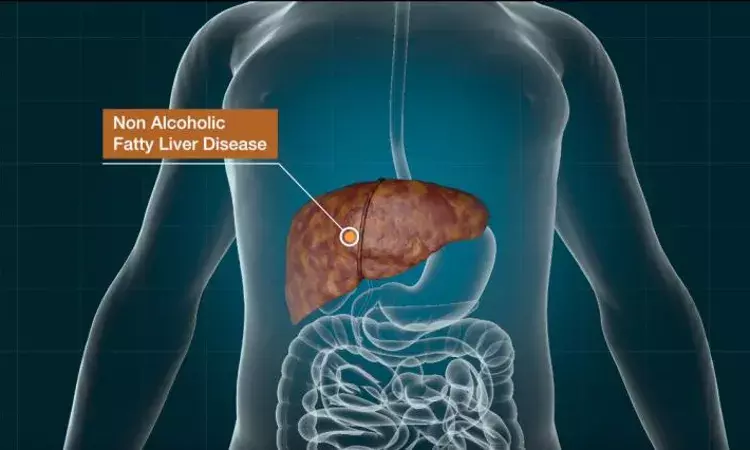- Home
- Medical news & Guidelines
- Anesthesiology
- Cardiology and CTVS
- Critical Care
- Dentistry
- Dermatology
- Diabetes and Endocrinology
- ENT
- Gastroenterology
- Medicine
- Nephrology
- Neurology
- Obstretics-Gynaecology
- Oncology
- Ophthalmology
- Orthopaedics
- Pediatrics-Neonatology
- Psychiatry
- Pulmonology
- Radiology
- Surgery
- Urology
- Laboratory Medicine
- Diet
- Nursing
- Paramedical
- Physiotherapy
- Health news
- Fact Check
- Bone Health Fact Check
- Brain Health Fact Check
- Cancer Related Fact Check
- Child Care Fact Check
- Dental and oral health fact check
- Diabetes and metabolic health fact check
- Diet and Nutrition Fact Check
- Eye and ENT Care Fact Check
- Fitness fact check
- Gut health fact check
- Heart health fact check
- Kidney health fact check
- Medical education fact check
- Men's health fact check
- Respiratory fact check
- Skin and hair care fact check
- Vaccine and Immunization fact check
- Women's health fact check
- AYUSH
- State News
- Andaman and Nicobar Islands
- Andhra Pradesh
- Arunachal Pradesh
- Assam
- Bihar
- Chandigarh
- Chattisgarh
- Dadra and Nagar Haveli
- Daman and Diu
- Delhi
- Goa
- Gujarat
- Haryana
- Himachal Pradesh
- Jammu & Kashmir
- Jharkhand
- Karnataka
- Kerala
- Ladakh
- Lakshadweep
- Madhya Pradesh
- Maharashtra
- Manipur
- Meghalaya
- Mizoram
- Nagaland
- Odisha
- Puducherry
- Punjab
- Rajasthan
- Sikkim
- Tamil Nadu
- Telangana
- Tripura
- Uttar Pradesh
- Uttrakhand
- West Bengal
- Medical Education
- Industry
CT may identify patients with high-risk nonalcoholic fatty liver disease
 NONALCOHOLIC FATTY LIVER DISEASE (NAFLD) OFTEN LEADS TO VARIOUS LIVER COMPLICATIONS, BUT THERE IS A LACK OF DRUGS FOR THE TREATMENT OF NAFLD. view more CREDIT: GWANGJU INSTITUTE OF SCIENCE AND TECHNOLOGY
NONALCOHOLIC FATTY LIVER DISEASE (NAFLD) OFTEN LEADS TO VARIOUS LIVER COMPLICATIONS, BUT THERE IS A LACK OF DRUGS FOR THE TREATMENT OF NAFLD. view more CREDIT: GWANGJU INSTITUTE OF SCIENCE AND TECHNOLOGYLeesburg, VA, - According to ARRS' American Journal of Roentgenology(AJR), Fibrosis-4 (FIB-4) and multiple CT findings can identify patients with high-risk nonalcoholic fatty liver disease (NAFLD)--advanced fibrosis or cirrhosis, that is--though the presence of nonalcoholic steatohepatitis (NASH) remains elusive on CT.
"Subjective assessment of multiple morphologic and separately quantified parameters by trained readers and a simple quantitative three-parameter model combining two CT features, liver surface nodularity (LSN) and liver segmental volume ratio (LSVR), and a clinical score (FIB-4) showed good association with presence of advanced fibrosis," wrote first author Meghan G. Lubner from the department of radiology at the University of Wisconsin School of Medicine and Public Health.
Based on a presentation at the ARRS 2019 Annual Meeting, Honolulu, HI, patients with biopsy-proven NAFLD who underwent CT within 1 year of biopsy were included. An experienced gastrointestinal pathologist performed a histopathologic review to determine steatosis, inflammation, and fibrosis. The presence of any lobular inflammation and hepatocyte ballooning was categorized as nonalcoholic steatohepatitis (NASH), while patients with NAFLD and advanced fibrosis (stage F3 or higher) were categorized as having high-risk NAFLD. Two readers subjectively assessed the presence of NASH and fibrosis.
The final cohort consisted of 186 patients (mean age, 49 years; 112 women and 74 men), of whom 87 (47%) had NASH and 112 (60%) had moderate to severe steatosis. A total of 51 patients were classified as fibrosis stage F0, 42 as F1, 23 as F2, 37 as F3, and 33 as F4. Additionally, 70 (38%) had advanced fibrosis (stage F3 or F4) and were considered to have high-risk NAFLD. FIB-4 score showed correlation with fibrosis, and of the individual CT parameters, LSVR and splenic volume had the best performance. Meanwhile, subjective reader assessment performed best among all parameters. FIB-4 and subjective scores were complementary, and for NASH assessment, FIB-4 performed best.
Noting the well-established utility of CT in identifying hepatic steatosis, the authors of this AJR article concluded that CT can also be "a highly accessible, frequently used method for assessment of patients with NAFLD and identification of those with high-risk NAFLD (advanced fibrosis or cirrhosis) who are potentially most in need of intervention.
https://www.ajronline.org/doi/10.2214/AJR.20.22842
Hina Zahid Joined Medical Dialogue in 2017 with a passion to work as a Reporter. She coordinates with various national and international journals and association and covers all the stories related to Medical guidelines, Medical Journals, rare medical surgeries as well as all the updates in the medical field. Email: editorial@medicaldialogues.in. Contact no. 011-43720751
Dr Kamal Kant Kohli-MBBS, DTCD- a chest specialist with more than 30 years of practice and a flair for writing clinical articles, Dr Kamal Kant Kohli joined Medical Dialogues as a Chief Editor of Medical News. Besides writing articles, as an editor, he proofreads and verifies all the medical content published on Medical Dialogues including those coming from journals, studies,medical conferences,guidelines etc. Email: drkohli@medicaldialogues.in. Contact no. 011-43720751


